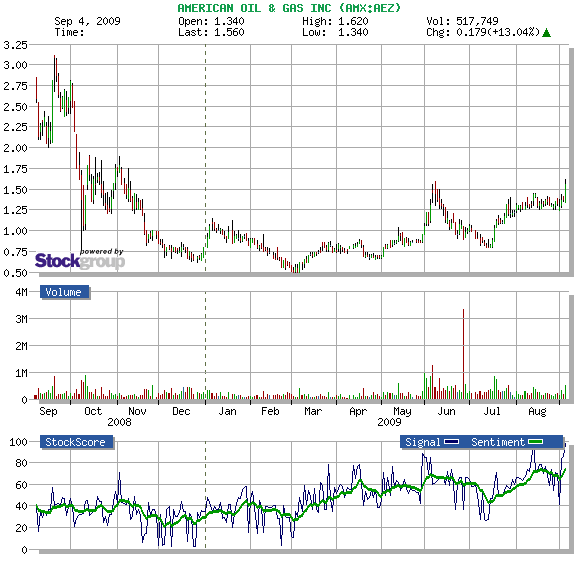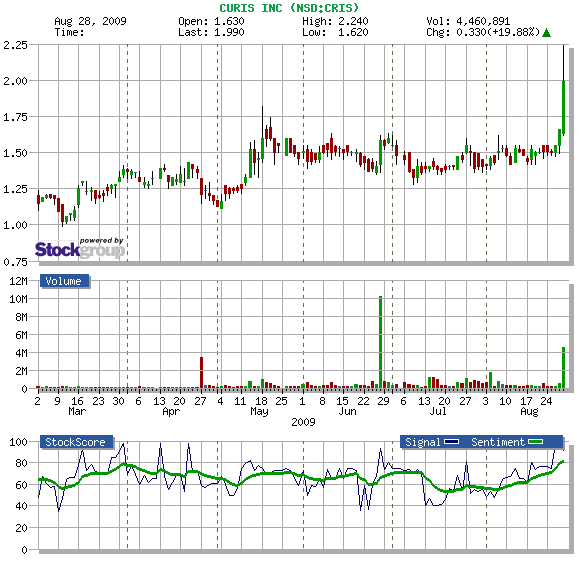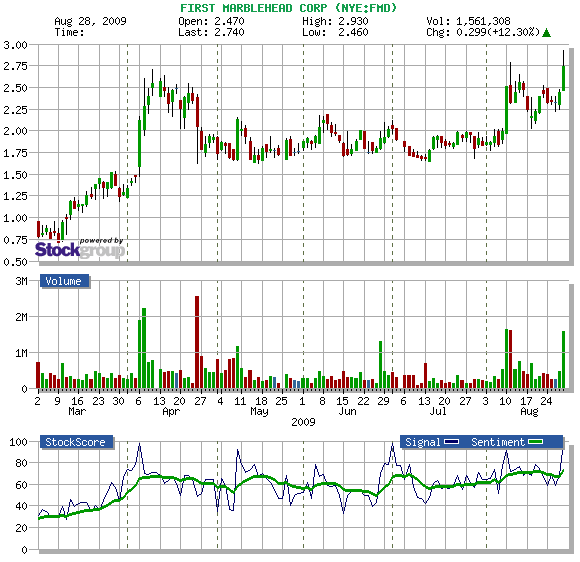Stockscores.com Perspectives for the week ending September 6th, 2009
![]()
Exchange Traded Funds (ETF) are now the dominant vehicle for investors who want some of the risk mitigation that comes with a diversified fund. Many ETFs represent a basket of stocks, often in a specific industry. They are great for investors who want to play the market without the pressure, and risk, of picking individual stocks.
ETFs go beyond simple stock investing. It is possible to play the price moves in commodities, currencies, bonds and global markets. Some ETFs provide leverage on the underlying instruments that they represent which can be beneficial for traders who understand how they are priced.
I like to use ETFs in a number of ways. The obvious thing to do is trade them, many ETFs have become very liquid and can be a great way to move in and out of sectors of the investment world that are on the move. But you can go beyond simply trading ETFs and use them in the analysis process to understand where the market is going. I like to monitor a variety of ETFs to understand where money is moving and how all the different markets are relating to one another.
More on that in a moment.
- Get the StockSchool Pro Free

- DisnatDirect named the number one Canadian brokerage for Traders by Surviscor! Open and Fund a brokerage account with DisnatDirect and receive the StockSchool Pro home study course free, including special Pro level access through the DisnatDirect client website. Offer only available to Canadian residents. For information, click here
First, let me share my two favorite resources for tracking the constantly changing world of ETFs. There are now hundreds of them and it is a daunting task to keep track of them all. I like to use Bloomberg for US listed ETFs. They organize the funds by Sector and type and have an ETF screener that can help you to find what you are looking for. I also use TMX Money to track Canadian ETFs. It is possible to download a complete list of Canadian ETFs in an Excel file from that site.
Since global markets and sectors all relate to one another, it is a good idea to use these resources to build Stockscores Watch Lists of key ETFs to monitor. I like to look at the ETFs that track the major North American indexes, namely SPY, DIA, QQQQ and T.XIU. You can also build Watchlists of the important sector, country and currency ETFs. With these, you can monitor changes in trend in one market that may affect other markets in the future.
For example, I like to watch GXC which is an ETF representing China. Right now, China’s markets have taken a more important role for the global economy because many investors are looking to China to pull the world out of its recession. We often see North American markets open based on what happened in Shanghai.
Commodities are also a very important indication of the state of the global economy and potential changes in interest rates. Since many are concerned that the amount of money added in to the system by the US Federal Reserve will lead to inflation, watching an ETF like GSG can provide an indication of whether prices are moving higher making a possible interest rate increase necessary.
Finally, I like to look at the country and currency ETFs to understand what economies are leading. You can get the best performance from a strong trending market and sometimes it is necessary to go outside North American in search of that kind of trade. In recent months, the Australian market has been doing well and a trade on their country fund, EWA or their currency, FXA, has been a profitable one.
With the upcoming launch of the Stockscores Trading Desk tool will come a new subscription based service where I will track and monitor many of these ETFs as well as provide my analysis. Stock picks will also be part of this service, complete with entry and exit alerts as they happen, directly to your computer desktop, email account or mobile phone. We will have more details on this new product in the weeks ahead.
![]()
While this time of year is normally a tough one for stocks, thus far there are no strong signs that the buyers are going to hand over control of the market to the sellers. The charts for the major indexes continue to have rising bottoms toward new highs. Until that changes, I think it is best to be long stocks.
In this environment, I like to trade the stocks that are abnormal in terms of volume and price. I ran a Market Scan for exactly that, using a minimum number of trades of 500 and found a couple of stocks that are showing good charts for position trades.
![]()
1. FSSI
FSSI started an up trend in July but has been taking a break over the last five weeks. However, on Friday it came to life again, breaking through resistance at $0.90 with good volume support. It looks like it can continue higher from here provided support at $0.83 is not broken.
Ed Note: the FSSI chart came in unreadable. It will be posted as soon as possible
2. AEZ
AEZ traded abnormal volume on Friday as it breaks from a rising bottom consolidation, a sign of optimism. Good so long as it can hold on a close above support at $1.24.

2. CRIS
CRIS traded very abnormal volume on Friday and broke through resistance that has held up for over two years. Something has investors excited, this stock has potential so long as it can stay above support at $1.45.

3. FMD
FMD is another abnormal stock from Friday’s trading, it breaks through resistance from an optimistic pattern. Support at $2.20.

Tyler Bollhorn started trading the stock market with $3,000 in capital, some borrowed from his credit card, when he was just 19 years old. As he worked through the Business program at the University of Calgary, he constantly followed the market and traded stocks. Upon graduation, he could not shake his addiction to the market, and so he continued to trade and study the market by day, while working as a DJ at night. From his 600 square foot basement suite that he shared with his brother, Mr. Bollhorn pursued his dream of making his living buying and selling stocks.
Slowly, he began to learn how the market works, and more importantly, how to consistently make money from it. He realized that the stock market is not fair, and that a small group of people make most of the money while the general public suffers. Eventually, he found some of the key ingredients to success, and turned $30,000 in to half a million dollars in only 3 months. His career as a stock trader had finally flourished.
Much of Mr Bollhorn’s work was pioneering, so he had to create his own tools to identify opportunities. With a vision of making the research process simpler and more effective, he created the Stockscores Approach to trading, and partnered with Stockgroup in the creation of the Stockscores.com web site. He found that he enjoyed teaching others how the market works almost as much as trading it, and he has since taught hundreds of traders how to apply the Stockscores Approach to the market.
References
Get the Stockscore on any of over 20,000 North American stocks.
Background on the theories used by Stockscores.
Strategies that can help you find new opportunities.
Scan the market using extensive filter criteria.
Build a portfolio of stocks and view a slide show of their charts.
See which sectors are leading the market, and their components.
Disclaimer
This is not an investment advisory, and should not be used to make investment decisions. Information in Stockscores Perspectives is often opinionated and should be considered for information purposes only. No stock exchange anywhere has approved or disapproved of the information contained herein. There is no express or implied solicitation to buy or sell securities. The writers and editors of Perspectives may have positions in the stocks discussed above and may trade in the stocks mentioned. Don’t consider buying or selling any stock without conducting your own due diligence.
